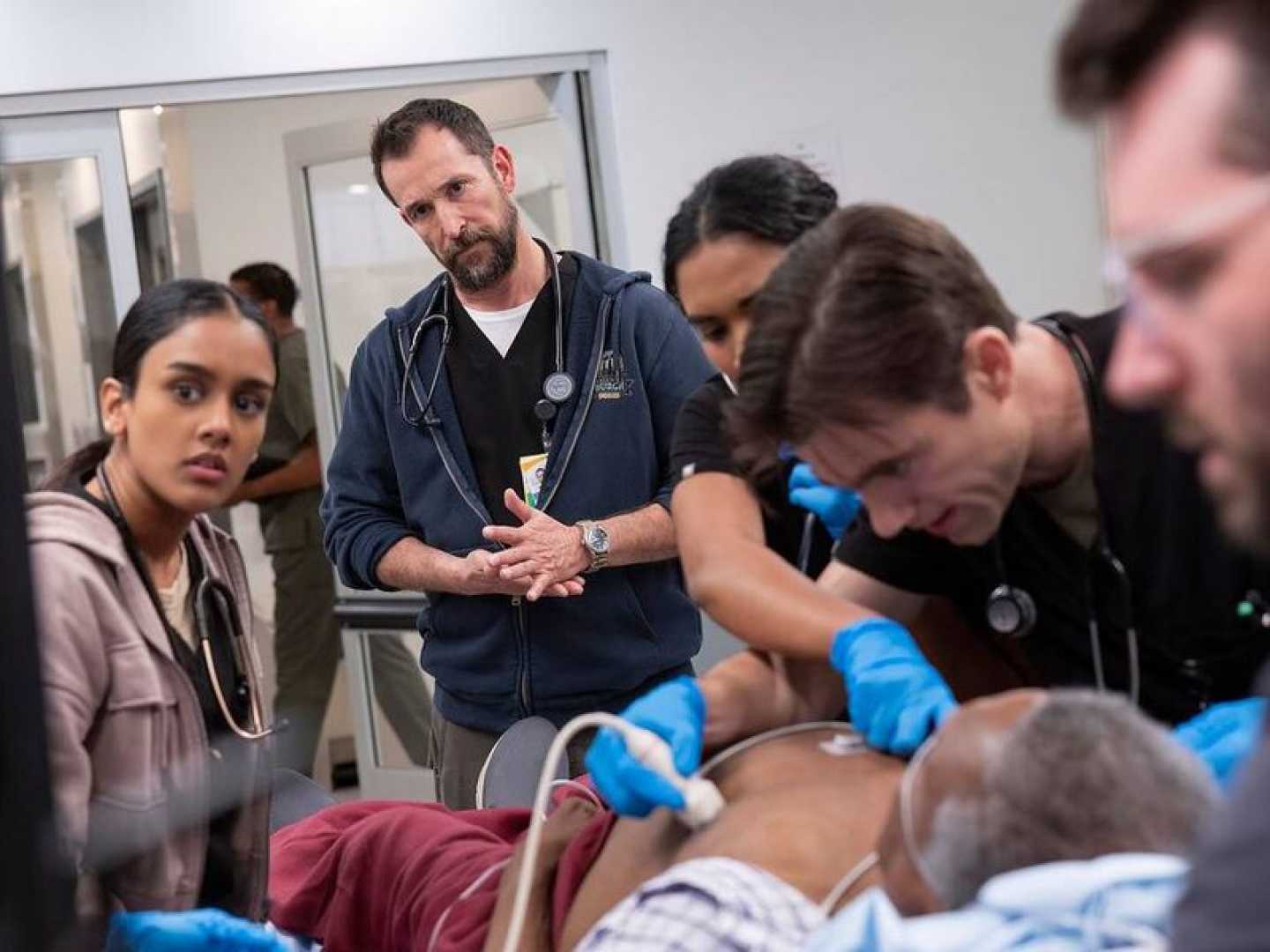Entertainment
Tragedy Strikes: The Pitt Faces Devastation After Mass Shooting

PITTSBURGH, Pa. — In a gripping Episode 13 of Max’s hospital drama “The Pitt,” head doctor Dr. Robby Robinavitch (Noah Wyle) and his team manage the turmoil following a mass shooting at a local music festival. The episode, set between 7 p.m. and 8 p.m., highlights the medical staff’s frantic efforts to treat an overwhelming influx of gunshot victims.
As they enter ‘code triage,’ Dr. Robby and the team prepare for an extreme situation, using color-coded slap bracelets to prioritize patients based on their risk of survival. The heartbreaking subplot revolves around Dr. Robby’s connection with Leah, the girlfriend of Jake, who he treats while grappling with personal emotions. Despite his attempts to save her, Leah succumbs to her injuries, leaving Dr. Robby emotionally shattered.
Dr. Christopher Colwell, chief of emergency medicine at Zuckerberg San Francisco General Hospital, weighed in on the show’s portrayal of a mass casualty incident. “I think they did a remarkable job capturing the reality of these horrific situations,” he said. Colwell, who has dealt with several mass shootings, noted the emotional toll such incidents can take on medical professionals. “When it becomes personal, it’s extremely real,” he commented.
Colwell emphasized the challenges faced when treating patients in crises. “You have to think in terms of where you can do the most good,” he said, pointing to the need for prioritization during emergencies. “I have to balance the needs of a critically injured patient with the reality that another may be more likely to survive.”
In discussing Dr. Robby’s choices during the episode, Colwell pointed out discrepancies in the dramatic narrative. “In real-life mass shootings, not all victims require immediate surgery,” he explained. “Typically, only about ten percent may need to go to the operating room quickly.” By focusing disproportionate attention on Leah, Dr. Robby risks losing others who may have been saved with a more systematic approach.
Despite the dramatic representation of events, Colwell highlighted inaccuracies regarding hospital resources. “The idea of opening 25 operating rooms on such short notice is unrealistic,” he said, adding that hospitals typically face equipment shortages in crises. “In these moments, hard choices must be made, and that’s where reality differs from dramatization.”
One particularly difficult aspect for emergency room staff is allocating roles during a mass casualty incident. Colwell noted, “Though you may find interns or residents stepping up, they wouldn’t typically perform procedures beyond their training. During such a crisis, clear communication and delineation of roles are crucial.”
As Episode 13 captivated viewers with its emotional depth, it reflected the real-life discussions healthcare professionals must engage in when preparing for mass casualties. The emotional impact of the aftermath is profound, and Colwell acknowledged the importance of destigmatizing these conversations in medical curricula.
Even amidst the chaos, Colwell appreciated the attention to detail in the show. “They got the incident command role correct,” he said, acknowledging the portrayal of an administrator focused on resource allocation rather than direct patient care. “You want someone who can navigate the logistical needs without muddying the clinical waters.”
The portrayal of equipment and procedural decisions also drew commentary. “There’s a good deal of creativity shown in the use of medical equipment,” Colwell noted, though he cautioned against implementing rarely used techniques during a high-stakes event without adequate training.
As the final moments of the episode depicted Dr. Robby’s emotional breakdown after Leah’s death, Colwell reflected on the pressures faced by medical professionals in crises. “It’s hard to see colleagues in pain, especially when they feel the weight of their decisions and the lives they may not have been able to save,” he stated.
The gripping narrative of “The Pitt” continues to resonate with audiences, shedding light on the complex interplay between personal connection and professional duty in the face of tragedy.










